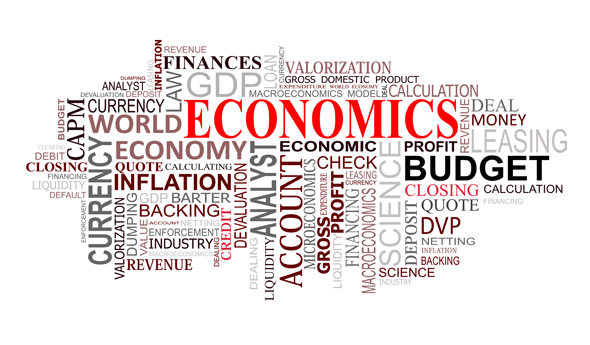Economic systems are complex, dynamic, iterative and constantly evolving. It’s clear that history often repeats and this has always been the focal point of economic analysis so as to make rational sense on the optimal allocation problem in a world plagued with scarcity. The best economic scholars and practitioners of our time have joined forces with analysts and theorists alike to deduce frameworks that can assist in the prediction of tipping point events or explain the mentality of herd and crowd behaviour amidst the interaction of a multitude of choice agents in a given system. Our world is becoming increasingly complex yet integrated and contagion effects are omnipresent across and between countries. Whilst it will always be difficult to quantify dependant and independent variables when trying to extrapolate outcomes, we do have the ability to resort to frameworks rooted in solid economic theory to predict what will happen next.
In a series launch of thealphaswarmer economic intelligence pieces, I am to put forward reference points to key indicators (leading and lagging) that, when prudently factored, will assist you in comprehending thematic shifts in a globally integrated world. Specifically, these are used to guage bull or bear market outlooks when used properly.
We will look at the signals of change across the key themes of:
- Bond Yield Spreads
- Yield Curve Steepness
- Deal Activity (M&A)
- Weekly Jobless Claims
- Investor Sentiment
- Market Expectations for Future Prices
All of these instinctively impact macroeconomic variables of aggregate demand.
BOND YIELD SPREADS:
Alicia Levine (Chief Market Strategist at BNY Mellon Investment Management) asserts that this “tell’s whether the most stressed companies have the cash flow to pay their debts. If not, to [her], that is a signal that the economy is rolling over and credit markets tend to tell you first”.
When companies borrow for investing in their production, business activities and expansions; the measure of what riskier companies pay to borrow compared to what the government (lets assume risk free debt – ceteris paribus) is deduced by the bond yield spread. When this curve gets wider or higher, it signals to investors that riskier companies are going to have a problem to pay back debt. Hence, it becomes inherently difficult for these companies at this stage to access loans, crimping profits and signaling that investors believe defaults are on the horizon. You should check this aggregate indicator out in the first instance.
YIELD CURVE STEEPNESS:
Jeffrey Kleintop (Global Chief Investment Strategist at Charles Schwab) asserts this to be ‘an incredibly useful forecasting tool for the peak in the stock market’
Agreeably this plots the interest rates paid on debt of various maturities (short term to long term) and when the economy is strong, longer term government bonds are typically higher than short term ones which reflect confidence in the long-term economic outlook. The inverted yield curve occurs where short term yields surpass long ones and is inherently a sign that investors are worried that inflation and growth will be low in the future. Historically, inversions often preceded recessions and bear markets for stocks. The paradox here is that this yield curve can be distorted by years of unorthodox global monetary policy that keeps yield on long term debt low. This divergence of monetary policy stances between developed and developing economies is a strong theme right now.
DEAL ACTIVITY:
Abi Oladimeji (Chief Investment Officer at Thomas Miller Investment) states that “Enthusiasm for [deal] activity tends to reflect broader economic optimism and coincides with booms in stock prices and credit expansion. However, history shows that these M&A waves are late-cycle indicators. Their demise often coincides with the end of the business cycle.’
Its natural, when there is an increase in deal activity, firms have taken credit to invest in business expansion and or integration. The dollar value of mergers and acquisitions activity per month is a strong indicator and can signal that sentiment has turned excessively optimistic (or off-course firms see it as the only way to grow as the economy decelerates).
WEEKLY JOBLESS CLAIMS:
Bob Baur (Chief Global Economist at Principal Financial Group) states that “Jobless claims are clearly a leading indicator of recessions […] They start to flash red on the economy when they start to rise on a four-week average basis, likely after a flattish period, and then continue to work gradually higher. That’s just a sign that something is likely amiss in the job market.”
Its not rocket science to draw this connection as when unemployment rises, the marginal propensity to save increases and consumptions decreases. The multiplier effect has less impact on aggregate demand and market participants view unemployment figures as a key leading indicator of the health of the labour market, the broader economy and thus the ability of companies to generate cash!
INVESTOR SENTIMENT:
Jim Paulsen (Chief Investment Strategist at the Leuthold Group) states that “‘When you’ve got confidence among players, they start engaging in bad behaviours. They create excesses and the bear has something to bite.’”
We have many measures of sentiment, from the American Retail Investor sentiment to the ones deduced by investment and tier one banks such as Westpac’s Investor Sentiment Indicator. We look for extreme highs and lows of investor bullishness here as when they get too optimistic; they tend to run down their savings and overspend. The marginal propensity to consume skyrockets and hence the multiplier on aggregate demand has an expansionary effect. Here, there is less ‘cushion to protect the market, allowing selloffs to gain momentum’. The Wall Street Journal asserts that this measure ‘worked very well just before the dot-com bubble burst and spiked just before selloffs in 2011 and 2019”.
WHAT THE MARKET THINKS:
With increasing integration of economies and the network effect, it is important to think of this as the market crowdsourcing predictions. One reference point is measured through options expiring in X months time to estimate a probability drop of Y on share market indices (20% or more is a definition of a bear market). This is really a gauge of current expectations for future prices, yes, however; its more-so contextual in the present than a predictive indicator. As a relative new measure, it is becoming increasingly referenced and analysed. More focus on these types of market sentiment indicators taking into account multi-variate models will come to light, unifying a variety of leading and lagging indicators in a focused attempt to influence future predictions
Conclusively, we cannot predict the future with precise certainty but we can leverage economic models and toolsets to make informed decisions that are not only prudent but contextually relevant given the economic environment.


